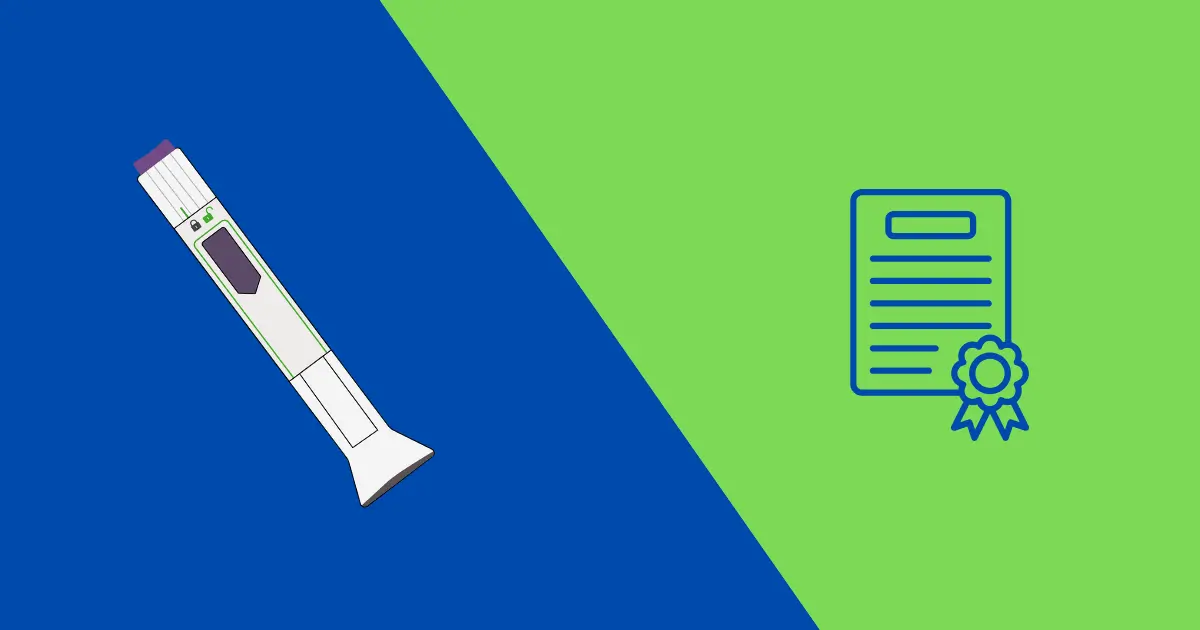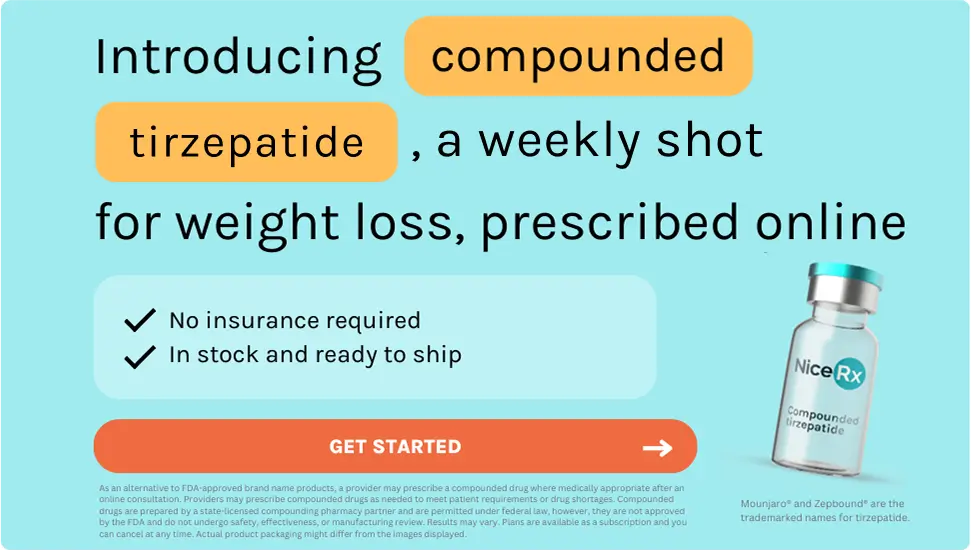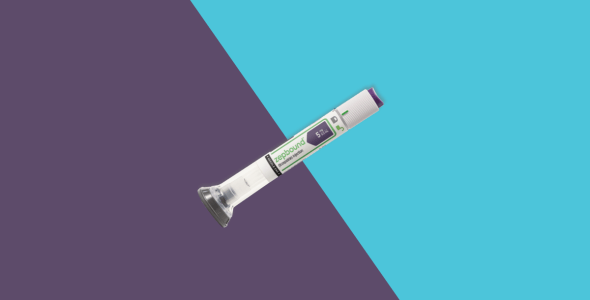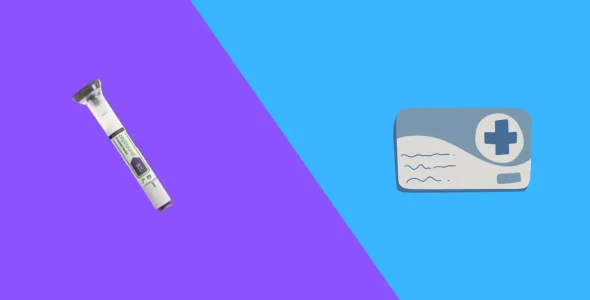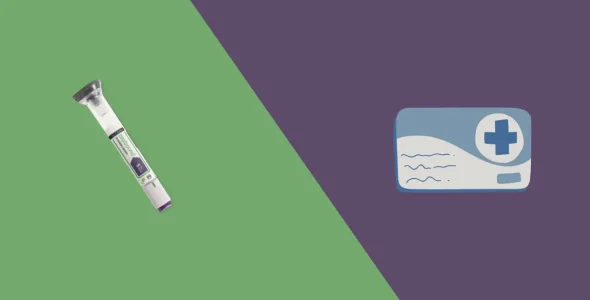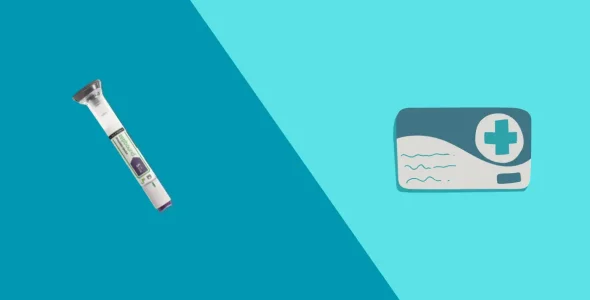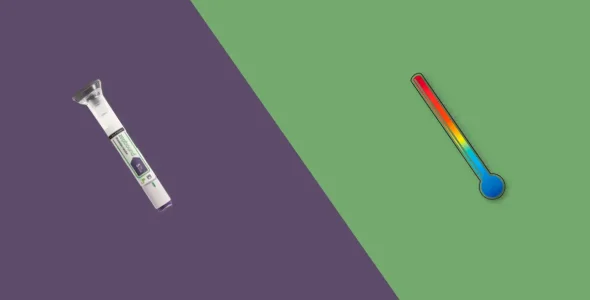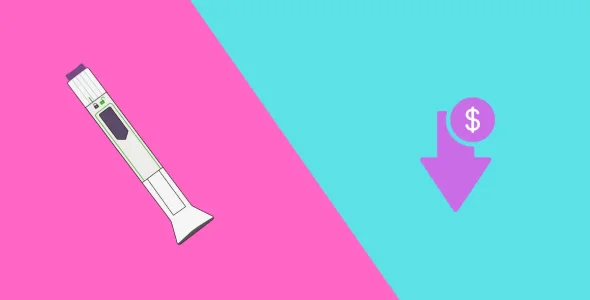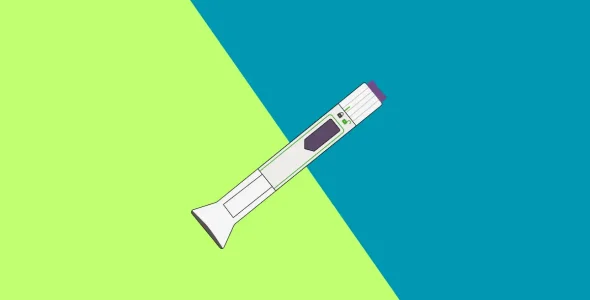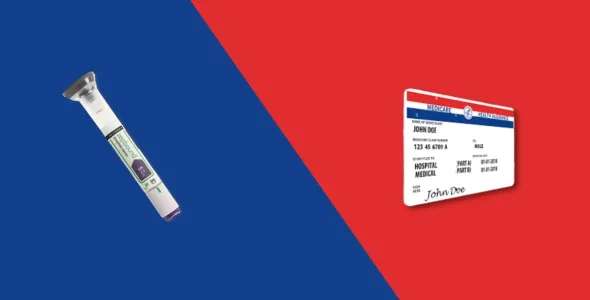Zepbound patient assistance program: The complete guide to Zepbound cost & savings
Struggling to afford your Zepbound prescription? Our guide breaks down how to save hundreds, and potentially even get your medication for free.
Key highlights
- Zepbound is an FDA-approved injectable for adults with obesity or overweight with at least one weight-related condition. It is also approved for obstructive sleep apnea in adults with obesity.
- The list price is over $1,000 per month, but most patients don’t pay full price. The actual out-of-pocket cost depends on eligibility for manufacturer programs, insurance coverage, and charitable assistance.
- The Zepbound Savings Card can reduce copays to as low as $25 per month for patients with commercial insurance. It’s not available for individuals enrolled in Medicare, Medicaid, or other government plans. Monthly and annual savings caps apply.
- Lilly Cares provides free medication to low-income, uninsured, or underinsured patients. Currently, Zepbound is not covered but may be added in the future.
- Other ways to save include pharmacy discount cards (GoodRx, SingleCare), non-profit copay assistance foundations, free samples from healthcare providers, and Zepbound vials through LillyDirect.
Zepbound (tirzepatide) is an FDA-approved injectable medication for weight loss in adults with obesity or overweight with one or more weight-related health conditions. The U.S. Food and Drug Administration (FDA) also approved Zepbound for obstructive sleep apnea in adults with obesity alongside diet and exercise in December 2024.
The list price of Zepbound (tirzepatide) is over $1,000 per month without insurance, which can be a significant barrier for long-term use.
Don’t worry, almost no one pays the full list price. Access to Zepbound depends on navigating manufacturer savings programs, insurance coverage, and charitable assistance.
Currently, there is no patient assistance program (PAP) specifically for Zepbound. However, the manufacturer offers several other support options to help lower costs, including the Zepbound Savings Card for patients with commercial insurance and LillyDirect self-pay vials.
Struggling with the cost of Zepbound? Our comprehensive guide breaks down the Lilly Savings Card, LillyDirect self-pay options, and other ways to save. Learn about the eligibility requirements and how to apply to start saving on your medication.
What is Zepbound?
Zepbound (tirzepatide) is an FDA-approved injectable GLP-1/GIP prescription medication for adults with obesity (BMI 30 or higher) or overweight (BMI 27 or higher) with at least one weight-related condition (high blood pressure, type 2 diabetes, high cholesterol, sleep apnea, cardiovascular disease). It is manufactured by Eli Lilly and Company. The medication is intended to be used with a healthy, lower-calorie diet and increased physical activity to manage weight.
Zepbound is also the first and only approved prescription medication for adults with moderate-to-severe obstructive sleep apnea in adults with obesity. This FDA approval is based on the results of the SURMOUNT-OSA phase 3 clinical trials.
Programs available for Zepbound
The list price of Zepbound is $1,059.87 per month according to the manufacturer, Eli Lilly. The retail price will vary depending on where you live and which pharmacy you buy from.
Fortunately, there are multiple ways to save on the medication with and without insurance as explained below.
Zepbound Savings Card (Manufacturer co-pay card)
The Zepbound Savings Card is for individuals with commercial insurance, including private insurance plans offered through an employer or individual plans purchased outside of government programs. If eligible, you can pay as little as $25 per month for Zepbound.
Unfortunately, this program is not intended for individuals with government-sponsored insurance like Medicare, Medicaid, or other government-funded insurance programs due to government regulations.
If you have commercial insurance, you can often use the savings card to reduce your co-pay or out-of-pocket costs, but if you have enrollment in any government-sponsored insurance, you may need to explore other patient support assistance options.
- Commercially insured with coverage for Zepbound: If your commercial insurance covers Zepbound (tirzepatide), the Zepbound Savings Card can help lower your out-of-pocket costs to as low as $25 per month with maximum savings of $150 per month. This card typically reduces your co-pay or other costs associated with the medication, helping you pay a lower amount each month.
- Commercially insured without coverage for Zepbound: If your commercial insurance does not cover Zepbound, you may still be eligible for the Zepbound Savings Card. You can pay as low as $650 for a 1-month supply and save as much as $469 per month when using the savings card.
To verify whether your insurance plan covers Zepbound, you can contact your insurance provider by calling the phone number on your insurance card. Your insurance company will also be able to tell you if prior authorization is required.
Patients with private or commercial insurance coverage for Zepbound may pay as low as $25 for a 1-month or 3-month supply of Zepbound, with the following limitations:
- Maximum monthly savings of up to $150 for a 1-month prescription
- Maximum monthly savings of up to $300 for a 2-month prescription
- Maximum monthly savings of up to $450 for a 3-month prescription
- Maximum annual savings of up to $1,950 per calendar year
- Prescriptions can be filled up to 13 times per calendar year
Patients with private or commercial insurance coverage without coverage for Zepbound could save up to $469 for a 1-month supply of Zepbound, with the following limitations:
- Maximum savings of up to $469 for a 1-month prescription
- Maximum annual savings of up to $3,283 per calendar year
- Prescriptions can be filled up to 7 times per calendar year
Eligibility criteria for the Zepbound Savings Card program
To qualify for the Zepbound Savings Card, you need to meet these requirements:
- You are enrolled in a private or commercial insurance plan
- You have a prescription from a licensed U.S. prescriber according to the FDA-approved product labeling (obesity, overweight, or chronic sleep apnea)
- You are not enrolled in government insurance plans such as Medicare, Medicaid, Medicare Part D, Medicare Advantage, Medigap, VA, DoD, TRICARE/CHAMPUS, or any state drug assistance program.
- You are a legal resident of the United States or Puerto Rico
- You are at least 18 years of age.
- You are not enrolled in an insurance plan that participates in an alternate funding program (AFP) that requires you to apply to the Zepbound Savings Card program.
Once approved for the program, provide your savings card to the pharmacist at a participating pharmacy when purchasing the medication. If eligible, the card’s benefits should be applied immediately, providing you with instant savings on the medication.
How to apply and use the card
Here are the steps to apply for and start using the Zepbound Savings Card Program:
- Visit the Zepbound Savings Card website: Go to the official Zepbound website, where you’ll find more information about the savings card program.
- Fill out the application form: Complete the online application form with your details, insurance information, and prescription details. You may also need to answer questions about your current insurance coverage.
- Eligibility check: The website will guide you through an eligibility check. This will determine if you qualify for the savings card based on your insurance status.
- Receive your savings card: Once approved, you’ll receive your Zepbound Savings Card. You can print it directly from the website, have it emailed to you, add it to your mobile wallet, or, if you prefer, the card can be mailed to your address.
- Present the card at the pharmacy: Take the savings card with you when you fill your Zepbound prescription at a participating pharmacy. The pharmacy will apply the discount to your medication.
- Reapply for the savings card: Once your savings card expires, you can reapply or contact the manufacturer for further assistance.
LillyDirect Self-Pay Pharmacy Solutions
LillyDirect Self-Pay Pharmacy Solutions provides a direct online way for patients not eligible for the Zepbound Savings Card to purchase Zepbound vials without insurance. It offers tiered vial pricing and specific refill timing rules that can affect the overall cost. Recent updates from Lilly have introduced lower prices for higher dosage strengths, making it more affordable for eligible patients.
This option is especially useful for those without insurance or whose insurance doesn’t cover Zepbound, allowing them to access the medication at a lower cash price. This program is available to all patients, regardless of their insurance status.
The program is specifically designed for those who can pay entirely out of pocket, so anyone trying to use insurance coverage would be ineligible. This ensures compliance with regulations and avoids conflicts with insurance billing rules.
Lilly Cares Patient Assistance Program (PAP)
Patient assistance programs are offered by drug manufacturers to provide medications at a lower cost or free to those who need financial help. This program is designed for low-income patients who are uninsured or underinsured, meaning they either have no insurance coverage at all or have coverage that doesn’t adequately cover their medication costs.
Eligible patients can receive free medication by meeting the program’s income and insurance requirements. Applicants must submit documentation of their financial situation and insurance status, which is reviewed by Lilly to determine eligibility.
While the program provides access to other Lilly medications, currently, Eli Lilly’s Lilly Cares Foundation does not cover Zepbound. However, this could potentially change in the future.
Patients looking for Zepbound will need to consider alternative financial support options, such as the Zepbound Savings Card, LillyDirect self-pay vials, or other manufacturer-sponsored programs for cost assistance.
Call The Lilly Answers Center Monday to Friday at phone number 1-800-Lilly-Rx (1-800-545-5979) to verify if you qualify for any other financial assistance programs.
Understanding Eli Lilly’s Zepbound Savings Card
The Zepbound Savings Card is not a traditional patient assistance program. It functions as a manufacturer coupon to reduce out-of-pocket costs for commercially insured patients only. Patients covered by Medicare, Medicaid, VA, or TRICARE are strictly ineligible.
To use the card, you typically need commercial prescription drug coverage and a valid Zepbound prescription that aligns with FDA-approved labeling.
The card has monthly and annual savings limits and may require signing a HIPAA authorization. It is designed to help patients afford their medication while staying within program guidelines.
You can use the Zepbound savings card offered by the manufacturer to save if you have private or commercial insurance coverage and do not have any government-sponsored insurance like Medicare or Medicaid. If eligible, it can lower the cost to as little as $25 per month.
Option 1: Patients with commercial/private drug insurance coverage for Zepbound
- Eligibility: You must have commercial insurance that covers Zepbound on its formulary.
- Cost: With the Savings Card, you could pay as little as $25 per fill (for a 1- or 3-month supply).
- How it works: The program functions as a copay card that you present at participating pharmacies to reduce your out-of-pocket costs.
- Annual limit: There is a cap on total savings, for example, up to $1,950 per year.
- Prior Authorization (PA): Coverage often requires Prior Authorization, meaning your healthcare provider must submit clinical documentation, including BMI, medical necessity, and evidence of failed prior treatments, to show that Zepbound is medically necessary.
Option 2: Patients with commercial/private drug insurance without coverage for Zepbound
- Eligibility: You have commercial insurance that does not cover Zepbound.
- Cost: You may be eligible to pay as low as $650 for a 1-month supply of Zepbound.
- How it works: The program functions as a copay card that you present at participating pharmacies to reduce your out-of-pocket costs.
- Annual Limit: This option includes a higher annual maximum savings cap (up to $3,283 per year) to help offset the cost of paying out-of-pocket.
A deep dive into the Zepbound Savings Card
- Commercial insurance required: The card is only available to patients with private insurance, such as employer-sponsored plans. It cannot be used with government-funded coverage.
- Not eligible if government-covered: Patients covered by Medicare, Medicaid, TRICARE, or other federal/state programs cannot use the card, as federal law prohibits manufacturer coupons for these plans.
- FDA-approved use only: The prescription for Zepbound must match an FDA-approved indication, ensuring the medication is being used safely and appropriately.
- Residence & age requirements: Eligibility may depend on your state of residence and age, according to Lilly’s program rules.
- Savings limits: The card has monthly and annual caps on total savings, meaning you could still pay some out-of-pocket costs if you reach these limits.
Always check the official Lilly Savings Card page for the most up-to-date Terms & Conditions, including eligibility criteria, caps, and program updates.
How to obtain and use the savings card in 3 easy steps
If you have commercial insurance, follow these 3 easy steps to lower your out-of-pocket costs. If you don’t have insurance or your plan doesn’t cover Zepbound, you can purchase vials directly from LillyDirect for up to $499 per month.
Step 1: Activate your card
- Go to the official Zepbound Savings Card website.
- Complete the simple online form with your name and email to activate your card.
Step 2: Bring the card to your pharmacy
- Show the digital card on your phone, print the PDF, or ask your pharmacist to look it up using your BIN, PCN, and Group numbers.
Step 3: Pay your reduced price
- Your copay could be as low as $25 per month.
- Savings are capped at $150 per 1-month prescription or $300 per 3-month prescription, so you may pay full price if you exceed these limits.
This process ensures you get the maximum savings available for commercially insured patients while keeping the steps straightforward.
How to buy Zepbound vials through LillyDirect in 2 easy steps
Here are a few steps that you can follow to buy Zepbound vials through LillyDirect:
Step 1: Visit LillyDirect
- Go to LillyDirect and create an account.
- Check the current self-pay vial pricing and refill timing requirements. Ordering within the recommended timing can lower your out-of-pocket costs.
Step 2: Your prescriber submits the prescription to LillyDirect
- Have your healthcare provider send your Zepbound prescription directly to LillyDirect.
- Complete the checkout process and arrange for shipping. Follow all safe handling instructions, including cold-chain requirements, to ensure the medication arrives safely.
This method is ideal for patients who pay out-of-pocket or whose insurance does not cover Zepbound.
Common challenges with the savings card
Some pharmacists may be unfamiliar with processing the card. They can call the number on the back of the card or use the BIN, PCN, and ID numbers to apply it correctly.
Insurance plans often require prior authorization (PA) before covering Zepbound. The savings card does not bypass insurance approval. Your doctor must submit and get the PA approved first.
Even with the card, your payment may still be significant. This usually happens if your deductible hasn’t been met or you’ve reached the card’s monthly or annual savings cap.
Getting insurance coverage for Zepbound
If your insurance initially denies coverage, you have the legal right to appeal. Appeals are often successful, with 39%–59% overturned, because many denials are reversed after human review.
To improve your chances, your provider must attest that you meet clinical guidelines (BMI ≥30 or ≥27 with a weight-related comorbidity) and may be required to include records of previous attempts at diet, exercise, or other lower-cost medications.
Consider using resources like GoodRx or the Medicine Assistance Tool (MAT) for prescription medicines like Zepbound.
Medicare (Part D)
Medicare does not cover Zepbound for weight loss alone, but it may provide coverage if you have obstructive sleep apnea and obesity, as Zepbound helps manage these conditions by promoting weight loss, which can improve sleep apnea symptoms.
Currently, Zepbound is not covered by Medicare for weight loss, either under Part D or Part B. Coverage for Zepbound varies by your Medicare plan. For example, if you have a Medicare Part D plan, coverage depends on whether the medication is on the plan’s formulary (list of covered drugs). Some plans will cover Zepbound if it’s prescribed for a medically necessary condition like sleep apnea with obesity, while other plans won’t cover it at all.
Check your plan’s formulary by reviewing your plan’s covered drug list, which is usually on your plan provider’s website or in your plan documents. Alternatively, you can call your Medicare plan provider for more information. If Zepbound isn’t covered, ask about other options, appeal under the Affordable Care Act (ACA), or explore other covered treatments.
There is a proposal to allow Medicare to cover weight loss drugs for people with obesity, so the coverage exclusion may be removed in the future.
The Medicare Plan Finder tool can help you find a Medicare plan that covers your specific medications.
Medicaid
Medicaid coverage for Zepbound can vary by state and Medicaid plan. Some state Medicaid programs may cover tirzepatide for eligible individuals with type 2 diabetes or weight loss, while others might not include it on their formulary.
In cases where it’s not covered, you can ask your healthcare provider to submit a drug exception request or explore other options like pharmacy discount cards to help reduce the cost.
Check with your specific state’s Medicaid program for eligibility requirements or your pharmacy for the most accurate coverage information.
To find out if Zepbound is covered by your health insurance, check your plan’s formulary (list of covered medications) or contact your insurance provider by calling the phone number on your insurance card. Some plans may have restrictions like step therapy or prior authorization before approving coverage.
Employer-sponsored insurance plans may cover Mounjaro for type 2 diabetes, but most plans, including Medicare and Medicaid plans, won’t cover Zepbound for weight loss or obesity due to the Medicare Prescription Drug, Improvement, and Modernization Act law that prohibits coverage of weight loss medications.
Other ways to save on Zepbound
Here are some other ways to save on Zepbound:
Pharmacy discount cards (GoodRx, SingleCare)
These cards provide negotiated cash prices at participating pharmacies, often lowering the cost of prescription medications for patients paying out-of-pocket.
Drugs.com, SingleCare, OptumPerks, and GoodRx have discount cards for pharmacies that may help lower the cost of Zepbound.
Discount cards cannot be combined with insurance or a manufacturer’s savings card. They serve as an alternative to cash payment when insurance coverage is unavailable or insufficient.
Online coupon websites
- GoodRx: Offers prescription discounts at participating pharmacies, including CVS, Walgreens, Walmart, and Rite Aid. You can check for specific savings based on your location and pharmacy.
- SingleCare: Similar to GoodRx, SingleCare provides discount cards that can be used at various pharmacies to help reduce the cost of medications like tirzepatide.
- RxSaver: This website offers discounts on medications, including tirzepatide, at participating pharmacies near you.
- WellRx: Another website where you can search for discounts on your prescriptions.
Free samples from healthcare providers
You can speak to your healthcare provider about obtaining free samples, typically provided when a patient starts treatment. Eli Lilly provides doctors and clinics with free samples of their medications to help their patients get started on treatment.
If you’re struggling with the cost, it’s worth asking your doctor or healthcare provider if they have any samples to help you get started with the medication at no charge. However, this is not a sustainable strategy, as samples are typically provided for up to one month.
Zepbound vials through LillyDirect
Zepbound vials have the same active ingredient, tirzepatide, as Zepbound pre-filled pens. Both are FDA-approved for chronic weight management in adults who are obese or overweight with at least one other weight-related condition (such as high blood pressure, high cholesterol, type 2 diabetes) and moderate-to-severe obstructive sleep apnea (OSA) in adults with obesity.
Like the pens, the vials are made by Eli Lilly and are used once a week. They come in six strengths (2.5 mg, 5 mg, 7.5 mg, 10 mg, 12.5 mg and 15 mg) and each vial contains a single dose. LillyDirect provides four vials for the month.
The current self-pay pricing for Zepbound vials is as follows:
- 2.5 mg / 0.5 mL: $349
- 5 mg / 0.5 mL: $499
- 7.5 mg / 0.5 mL: $499
- 10 mg / 0.5 mL: $499
- 12.5 mg / 0.5 mL: $499
- 15 mg / 0.5 mL: $499
Non-profit copay assistance foundations
Organizations like the Patient Advocate Foundation and HealthWell Foundation provide financial support to help cover copays and out-of-pocket medication costs.
Many foundations have disease-specific funds and may assist even if you have insurance, helping reduce the burden of high prescription costs.
These funds are limited and can run out. It’s important to apply as early as possible to maximize your chances of receiving assistance.
Discussing cost with your doctor
Don’t hesitate to talk to your doctor about the financial burden of Zepbound or other medications.
Your doctor may be able to provide sample kits, suggest alternative medications, or recommend patient assistance programs to help reduce out-of-pocket costs.
Having this conversation ensures you can access treatment without unnecessary financial stress and explore every available support option.
Safety and side effects
Zepbound has side effects similar to other weight loss drugs like Wegovy or Ozempic (semaglutide). A 2023 study found that side effects from tirzepatide may happen in the first 2 weeks after the first dose.
The most common side effects of Zepbound may include nausea, vomiting, diarrhea, constipation, abdominal pain, indigestion, and hair loss, especially when starting the medication or after a dose increase.
For most people, these side effects are mild and improve over time as your body adjusts.
In rare instances, Zepbound can cause serious side effects:
- Risk of hypoglycemia (low blood sugar)
- Changes in vision (diabetic retinopathy)
- Severe allergic reactions
- Acute kidney/gallbladder disease
- Acute pancreatitis (inflammation of the pancreas)
- Thyroid tumors/thyroid cancer (a lump or swelling in the neck, hoarseness, and trouble swallowing)
- Suicidal thoughts
Zepbound should not be given to people with a personal or family history of multiple endocrine neoplasia syndrome type 2 (MEN 2) or medullary thyroid carcinoma (MTC).
Zepbound may reduce the effectiveness of birth control pills. Your healthcare professionals may suggest using a different form of birth control for 4 weeks after starting Zepbound and after each dose increase.
Let your healthcare provider know if you are pregnant, planning to become pregnant, or breastfeeding before starting treatment.
FAQ
Can I use the Zepbound Savings Card if I have Medicare?
No, you can’t use the Zepbound Savings Card if you have Medicare, as federal law prohibits manufacturer savings cards for Medicare Part D beneficiaries.
Can I use the Zepbound Savings Card if I have Medicaid?
No, you can’t use the Zepbound Savings Card if you’re covered by Medicaid. Federal law prohibits the use of manufacturer savings cards for drugs paid for by government support programs.
What’s the difference between the Savings Card and Lilly Cares?
The Zepbound Savings Card helps people with commercial (private) insurance lower their out-of-pocket costs for the medication. In contrast, Lilly Cares is a patient assistance program that provides free medication to those who are uninsured and meet specific low-income and insurance eligibility criteria.
How long does it take to get approved for Lilly Cares?
Approval for Lilly Cares typically takes a few weeks. To avoid delays, make sure all parts of the application, including your doctor’s section, insurance and income documentation, are filled out completely and accurately. Working closely with your provider can help speed up the process.
My insurance denied coverage. What are my options?
If your insurance denied coverage, ask your doctor to help file an appeal. Many denials are overturned with additional medical documentation. While waiting, you can use a Tirzepatide coupon (e.g. GoodRx) to lower the out-of-pocket cost, or if you’ve lost coverage, check whether you qualify for Lilly Cares for free medication.
Is there a generic for Zepbound?
No, there’s currently no generic version of Zepbound. The active ingredient, tirzepatide, is still under patent protection, so a generic version isn’t expected to be available for several years.
Conclusion
The two main pathways to manage Zepbound costs include the Zepbound Savings Card for patients with commercial insurance and LillyDirect (Zepbound vials) for those without insurance. Other options, like GoodRx or non-profit copay foundations, can also help reduce expenses.
While Zepbound’s list price is high, the cost becomes manageable with the right strategy. Use the Zepbound Savings Card if you have commercial insurance, and consider LillyDirect vial discounts if uninsured.
